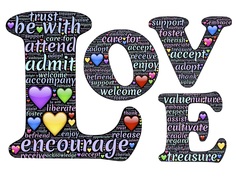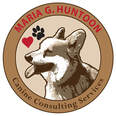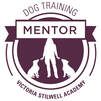A blog for all things dog-related: training, behavior, fun new doggie items, veterinary information and, of course, ways to enhance your relationship with your best four-legged friend!
During our first session together, this client was delighted to learn that yes, there is a better way – and it doesn’t involve intimidating her dog into submission or any kind of hitting or pain at all. We discussed what was leading into her dog’s anxiety, how to teach him to cope with that, and how to use her own energy, body language, and clear direction to set him up for success. We demonstrated exhibiting leadership based on respect, since dogs are living, emotional beings with feelings and deserve as much respect as any of us wish to have from others. After less than 12 hours, my new client contacted me, thrilled, to share that she was already seeing positive results and a change in her dog’s behavior! Sadly, I hear of this situation all too often. We are still surrounded by television shows, books, information from Google searches, and local dog trainers who still practice the traditional-style training methods that were created long before scientific research had delved into the psychology of how dogs learn and how they process information and emotion. Even though these traditional-style, dominance-based, punitive training methods are outdated and have been disproven, trainers who practice these methods are still out there practicing because they’re too proud to accept that there is a better way. A way that will instill confidence, security, and a positive relationship with our dogs rather than one that instills fear, pain and tension in the relationship. Let’s take a look at the differences between these two methods:
If we truly love our dogs, why would we want to treat them like lesser beings that we can dominate rather than the emotional beings that they are? Most people who practice these traditional methods do so because they buy into the “dominance myth” of the past – the one that says dogs are like wolves, they fight for dominance, and we must show them we are the “alpha” and put them in their place. This involves rolling them over onto their backs to force them to submit to us, not letting them walk in front of us or eat before us, and having a heavy hand.
While dogs do crave structure and confident leadership, they do not need a heavy hand to get that. And while some breeds are stronger, more independent-minded, and have bigger personalities than others, there are extremely few dogs (if any) that you cannot reach by using relationship-based, positive reinforcement methods. But the majority of dogs do not do well with punitive methods, and for most rescue dogs or sensitive dogs, these methods can create much bigger issues as a result of the fear and anxiety. Even “stronger” breeds like shepherds, Rottweilers and pit bulls have feelings (they can be sensitive too) and want to be respected.
Any healthy relationship is grounded on clear communication, patience, understanding, trust, and respect. There are many highly skilled and reputable trainers out there who see dogs for the wonderful beings that they are and recognize the joy they bring into our lives. Having respect for a living being does not include intimidation and physical discomfort – that is considered abuse in today’s standards and I couldn’t agree more. I don’t see how a trainer who actually cares about dogs and has their best interest in mind could ever suggest these tactics. There is a great movement to educate dog owners about how the training methods we use can impact our dogs’ development and emotional state, as well as influence behavior. This education is a major mission of mine. Thankfully, more and more responsible dog owners are listening and realizing that they love their dogs too much to inflict painful methods or cause their dogs to fear them. To these owners I say, Congratulations and welcome to the first step in finding harmony with your four-legged friend! Please help to continue to spread the word so we can all share better lives with our canine companions!
0 Comments
Your comment will be posted after it is approved.
Leave a Reply. |
AuthorMaria Huntoon, CBCC-KA Archives
April 2020
Categories |










 RSS Feed
RSS Feed






